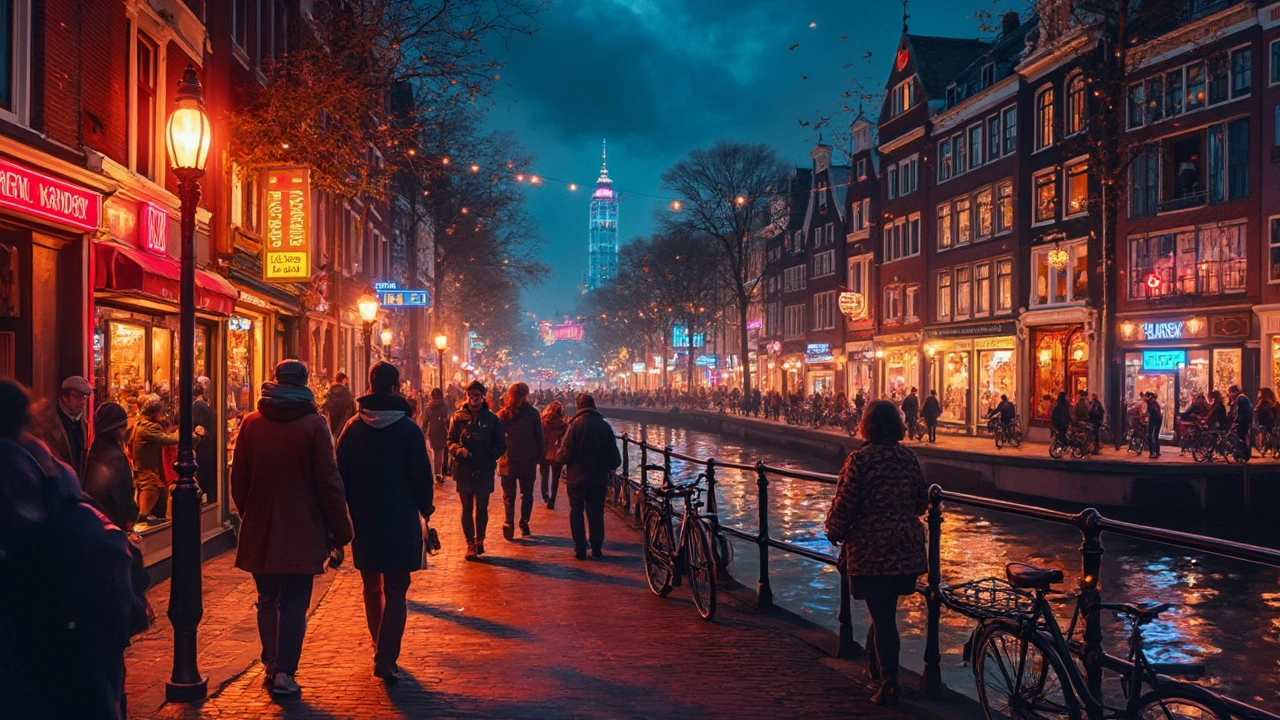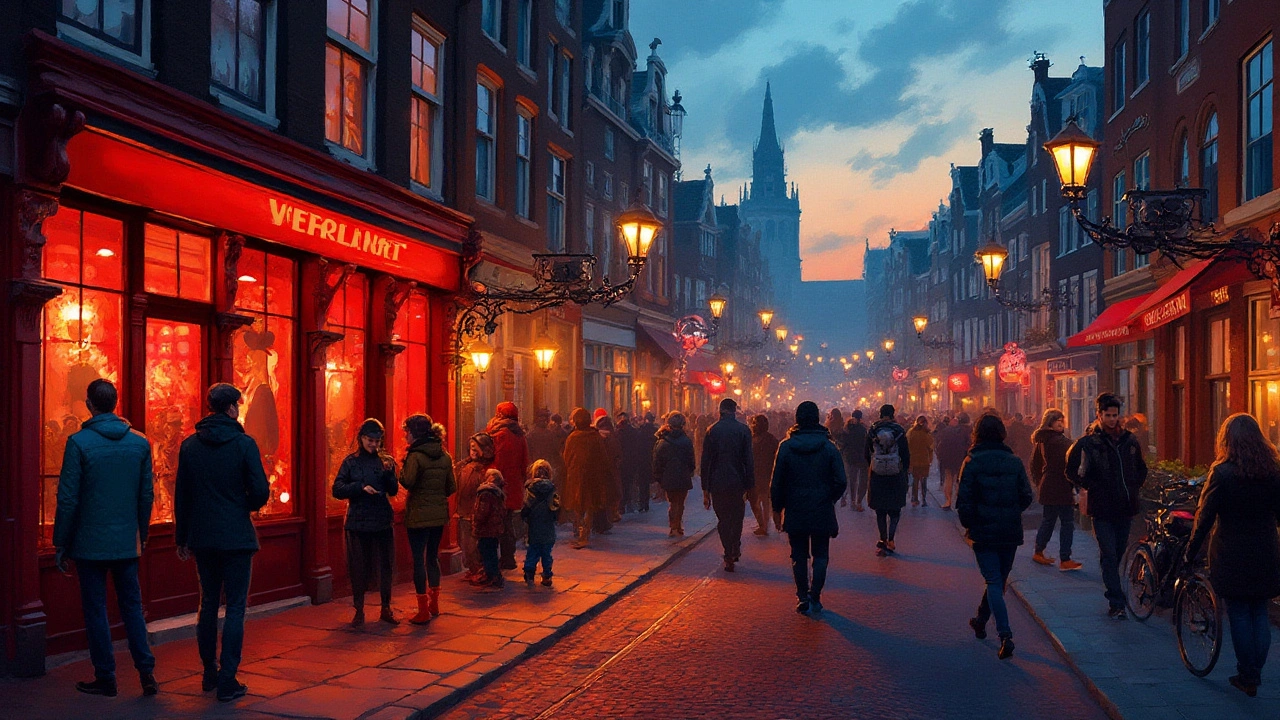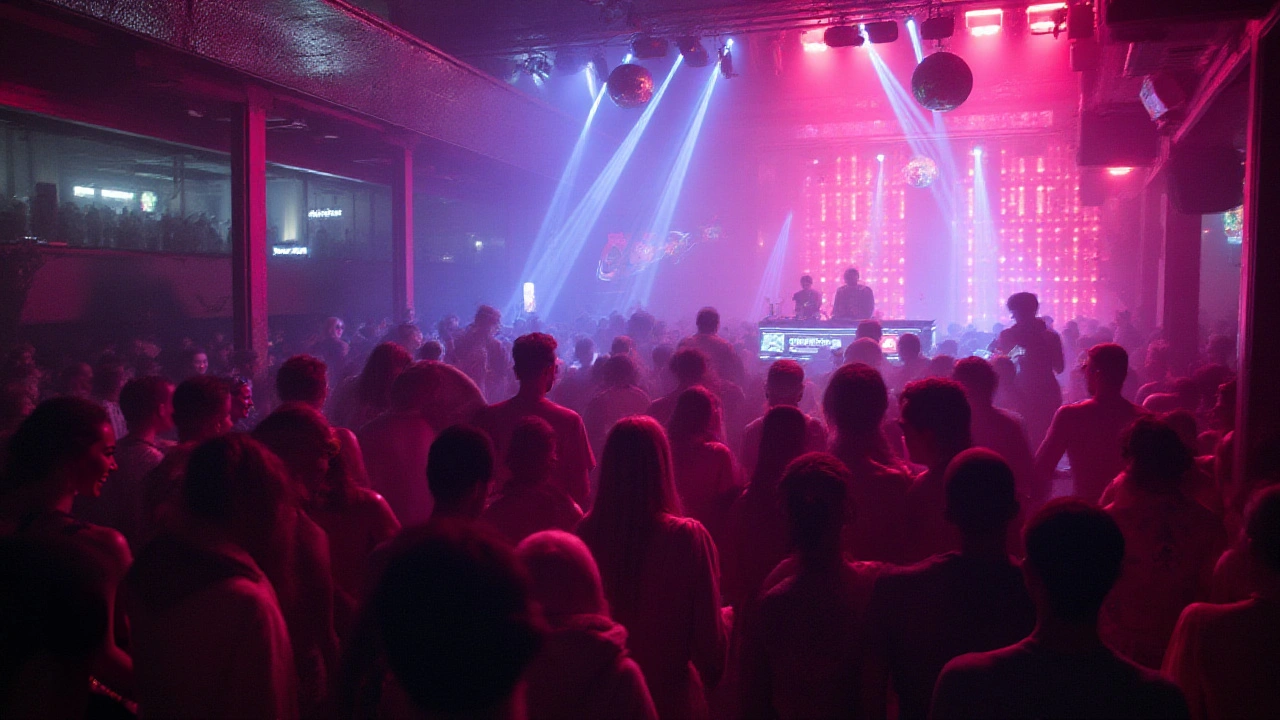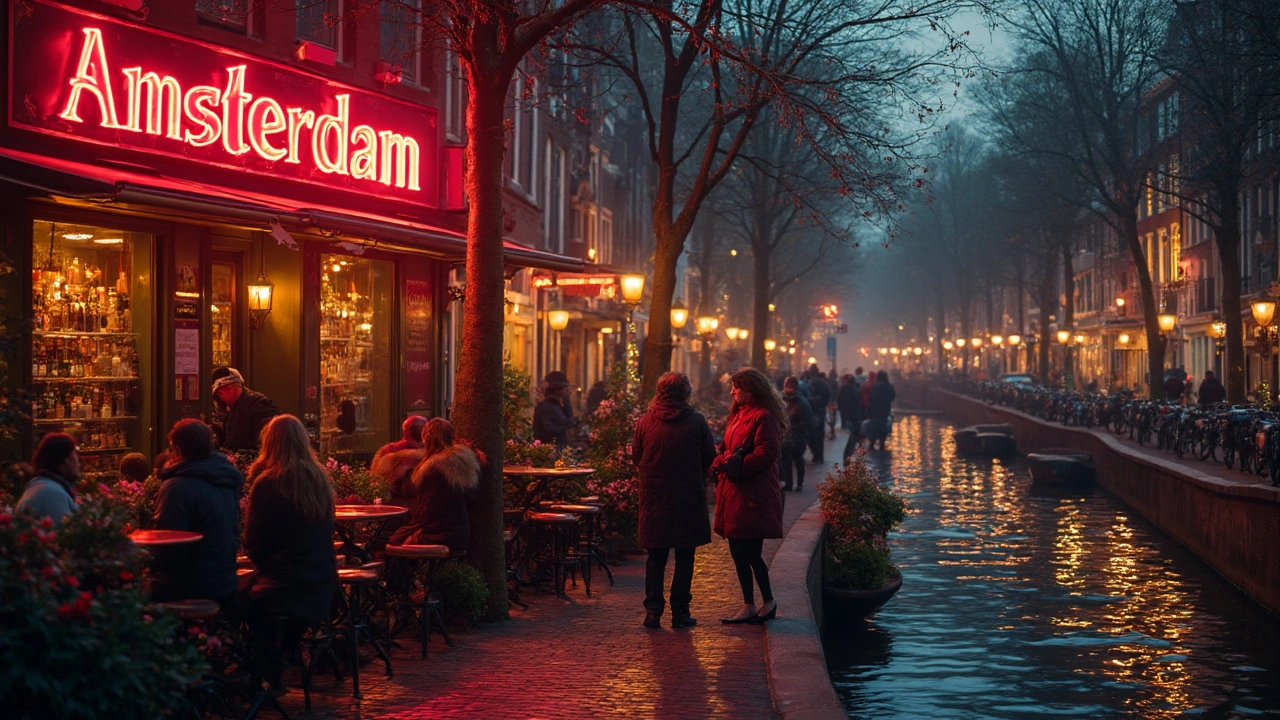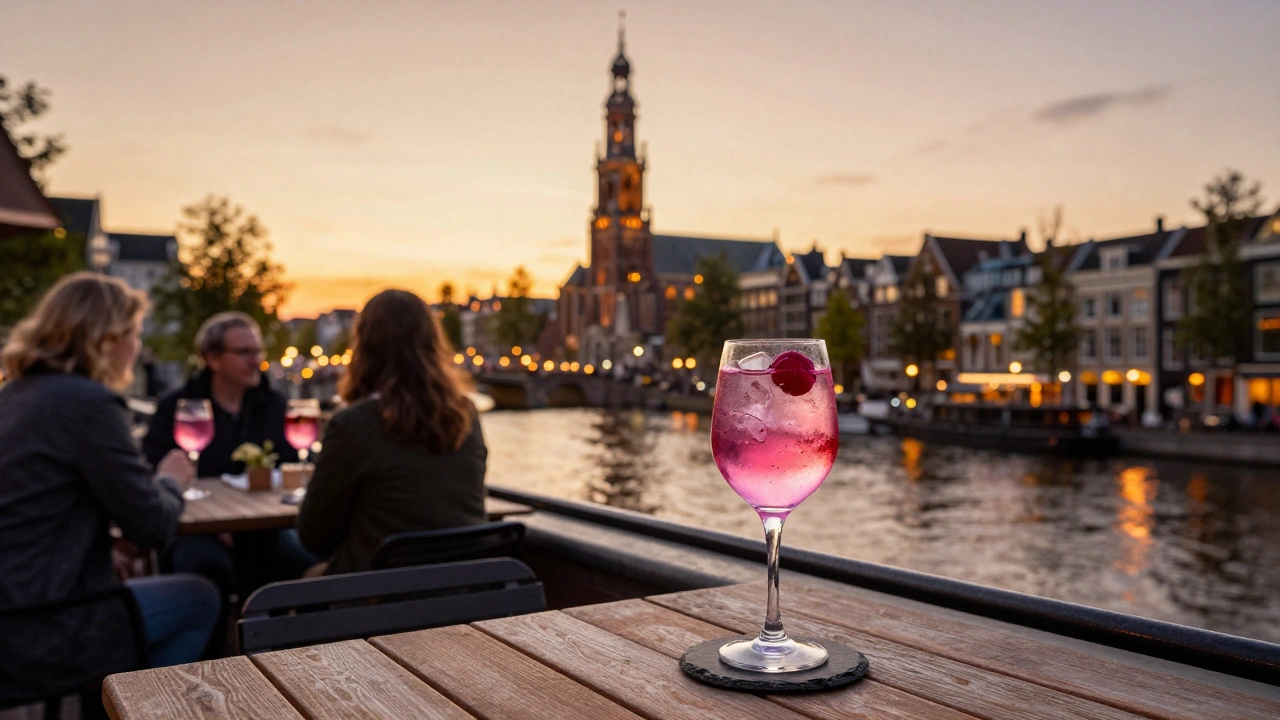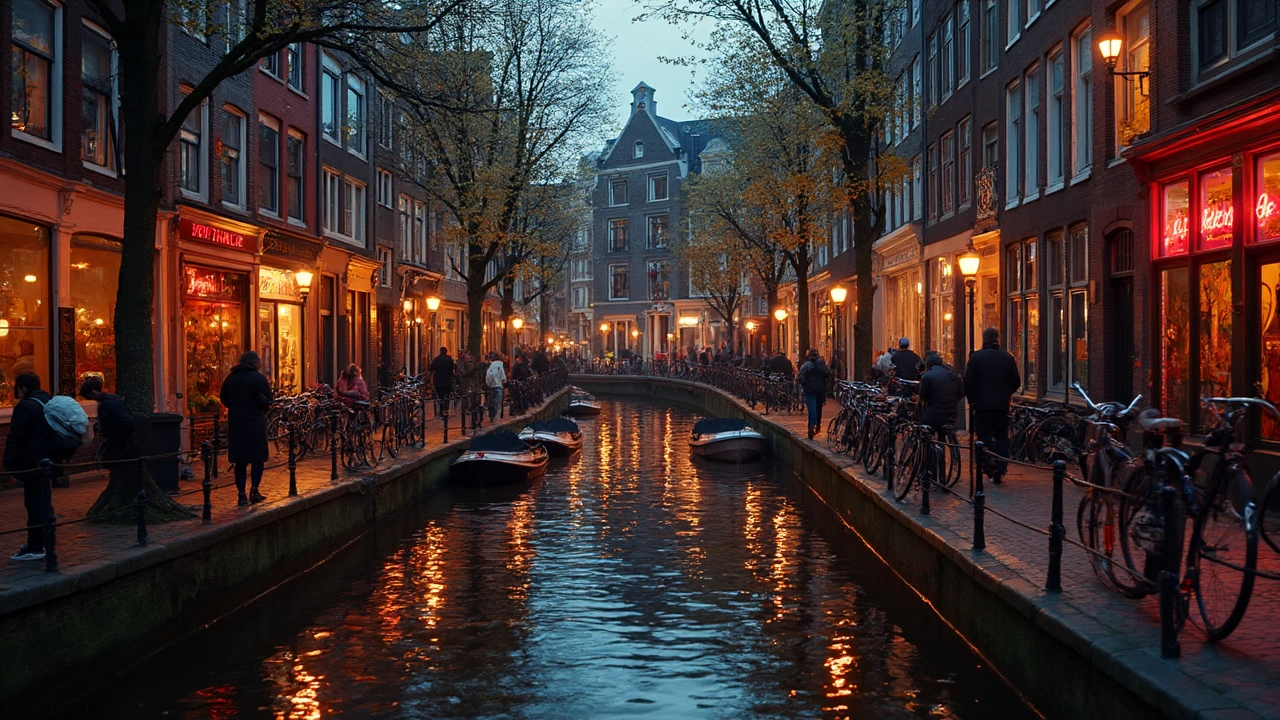
You’ve heard all the stories about the red light district in Amsterdam, but here’s something most tourists don’t realize—there’s not just one red light zone. Most people imagine just the famous De Wallen, with its glowing windows and old canals, but Amsterdam’s got a couple more spots that fly under the radar and offer a different vibe.
If you’re planning your trip, you’ll want to know where these areas are, what makes each one tick, and how to get around without embarrassing yourself or breaking a rule. For example, De Wallen is smack in the city center, packed with tourists and bachelor parties, local bars like Café Remember, and even quirky attractions like the Red Light Secrets Museum. But head a bit west to Singelgebied, or south to De Pijp, and you’ll find smaller, quieter districts—less flashy, a bit more laid-back, and better for anyone who wants a less-crowded look at this side of Dutch culture.
Here’s what matters: pay attention to the neighborhood you’re in and watch for blue-lit windows (those have a different meaning than the usual red). Avoid stopping in front of doors for too long. Always be polite to the workers and keep your phone in your pocket—snapping photos is a big no-go and could get you into trouble fast.
- The Real Count: Amsterdam's Red Light Districts
- De Wallen: The Classic Heart of Amsterdam
- More Than De Wallen: Exploring Other Red Light Areas
- Unique Features: How Each District Stands Out
- Practical Tips for Visiting as a Tourist
- What to Know: Laws, Etiquette, and Staying Safe
The Real Count: Amsterdam's Red Light Districts
Most people think the Amsterdam red light district is just De Wallen, but there’s more to it. Actually, the city has three main red light areas: De Wallen, Singelgebied, and De Pijp (also called Ruysdaelkade). Each district is set up a bit differently and draws a slightly different crowd.
Here's a quick breakdown:
- De Wallen: This is the oldest, biggest, and busiest zone, right in the heart of the city center. It’s what you see in almost every documentary, with the red-lit windows, alleys like Oudezijds Achterburgwal, plus tons of peep shows, sex shops, and the playful Erotic Museum.
- Singelgebied: Just a short walk west from Centraal Station, this area is smaller but easy to find. It runs along Singel canal between Haarlemmerstraat and Spui, with fewer crowds and a more low-key vibe. This is where you’ll also spot blue-lit windows, which means transgender sex workers.
- De Pijp (Ruysdaelkade): This southern district is more spread out and flies under the tourist radar. It’s mostly along Ruysdaelkade street, not far from Albert Cuyp Market. It’s quieter, mixed in with bars and apartments.
For a quick side-by-side, here’s how they stack up:
| District | Main Streets/Area | Number of Windows (approx.) | Busy Times |
|---|---|---|---|
| De Wallen | Oudezijds Achterburgwal, Oudezijds Voorburgwal | ~300 | Evenings, weekends |
| Singelgebied | Singel Canal (Haarlemmerstraat–Spui) | ~80 | Late night |
| De Pijp | Ruysdaelkade, Ferdinand Bolstraat | ~40 | Late evening |
There are no new red light zones planned, since the city wants to limit expansion. Sometimes, you’ll hear about the city council discussing moving windows out of De Wallen or even closing some down. If you want to explore, you’ll find the biggest action at De Wallen, but the other two are good bets if you prefer less packed streets and a more local feel.
De Wallen: The Classic Heart of Amsterdam
No place hits your bucket list for Amsterdam nightlife quite like Amsterdam red light district known as De Wallen. This spot isn’t just about the neon lights and famous brothel windows—it's the oldest, most famous, and busiest red light area in the city. De Wallen sits right in the medieval city center and runs along the Oudezijds Achterburgwal canal. You can’t really miss it—the district is just a short walk from Centraal Station and Dam Square.
De Wallen covers several connecting narrow streets and alleys. You'll find hundreds of windows where sex workers legally conduct business. The district is also packed with coffee shops, quirky bars like Cafe The Bulldog (one of the oldest cannabis cafés), and adult stores. Around the corners, there are small museums you won’t find anywhere else, like the Erotic Museum and Red Light Secrets, which gives a peek into the life behind the window.
- Operating hours for the windows: Most open around 8-9 AM and close by 6-7 AM. The action never really stops.
- Best times to visit: Between 8 PM and midnight if you want to see the area buzzing but not packed to the point you can’t move.
- Family-friendly? Not really, but you do see tour groups passing through during the day. It’s more adult-oriented in vibe after dark.
Let’s get a bit concrete with some numbers. De Wallen has about 300 window spaces in its main area, making it the largest legalized window prostitution district in the city.
| Fact | Details |
|---|---|
| Main Area | About 300 window spaces |
| Location | Oudezijds Achterburgwal & surrounding lanes |
| Points of Interest | Red Light Secrets Museum, Oude Kerk, Cannabis stores |
| Proximity | 5-minute walk from Centraal Station |
A couple insider tips: Watch out for pickpockets—it’s a busy spot, especially after dark. Stick to the main paths at night, and don’t wander into alleys you don’t know. And seriously, don’t take photos of the windows or workers. Workers here expect privacy and it’s enforced with no-nonsense attitude by locals and nearby security. If you want a more chilled experience, swing by mid-morning before the crowds roll in. And hungry? Grab a fresh stroopwafel or Dutch fries from a street vendor near Nieuwmarkt before diving in.
More Than De Wallen: Exploring Other Red Light Areas
Most folks think the Amsterdam red light district is just De Wallen, but there are two other legal red light zones where window prostitution happens: Singelgebied and Ruysdaelkade. These aren’t as hyped as the main district, but locals know them well. If you want a less touristy experience, these spots are worth checking out.
Singelgebied: This district sits west of De Wallen, alongside the Singel canal. You’ll spot red-lit windows tucked between bars, coffee shops, and flower stalls. It's a bit more discreet and mainly attracts office workers grabbing drinks after hours or folks cruising the canal. The Singel red light area runs roughly from Nieuwezijds Voorburgwal to Spuistraat, and dozens of windows are clustered there. It’s smaller than De Wallen but still very visible—especially at night.
Ruysdaelkade: In the southern district of De Pijp, Ruysdaelkade used to be considered the "local" red light area. You won’t find the big crowds or stag parties here like in De Wallen. This stretch near Ceintuurbaan features windows along the water, with fishmongers and bike shops close by. Some say the whole vibe is calmer—less noise, fewer tourists, and workers who prefer regulars over random walk-ins.
"Amsterdam has operated three official red light areas since the 1970s, and each attracts its own kind of clientele," the Dutch Prostitution Information Center explains. "Most visitors know De Wallen, but Singel and Ruysdaelkade are just as much a part of the city’s history."
Here’s a quick comparison of all three legal window areas, just to keep things straight if you’re scouting around:
| District | Location | Number of Windows (approx.) | Main Vibe |
|---|---|---|---|
| De Wallen | Old Center | 300+ | Touristy, busy, historic |
| Singelgebied | Singel canal near Spuistraat | 40-50 | Relaxed, business crowd |
| Ruysdaelkade | De Pijp (South) | 30-40 | Quiet, local, low-key |
Here are a few things to remember when exploring these areas:
- Daytime visits are much quieter, but some windows may be closed.
- Weekends feel a lot busier—stick to weekdays if you want some space.
- Taking photos is off-limits in every district. Don’t risk it.
- Each zone has plenty of regular bars and food options nearby if you want to relax and people-watch.
So if you’re feeling adventurous, don’t just settle for De Wallen. Grab a bike or hop a tram to these other neighborhoods and see a different, less crowded side of Amsterdam’s famous window scene.
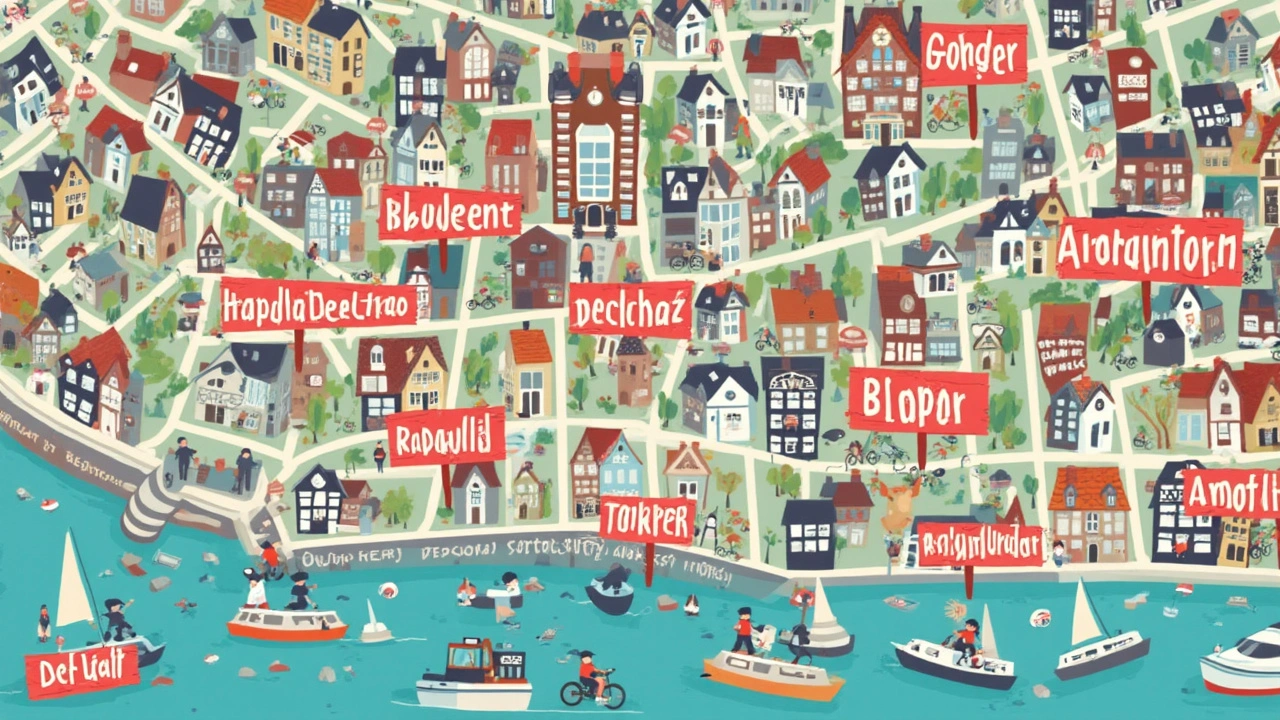
Unique Features: How Each District Stands Out
Every one of Amsterdam’s red light districts has its specific flavor. If you just stick to the postcard version—De Wallen in the center—you’ll miss the quieter, sometimes more authentic corners where locals actually go.
Start with De Wallen. This is the huge, iconic one most folks picture. It stretches across narrow alleys and old bridges, buzzing with tourist crowds, bachelor parties, and red-glow windows (about 300 of them, believe it or not). This area is also packed with quirky museums, like the Erotic Museum and Red Light Secrets. The Oude Kerk (Old Church) sits right in the middle, which still blows my mind every time I walk past—old stone saints just meters from neon signs. You’ll find everything here: sex shops, cannabis cafés, snack stands, and places selling fries with mayo way past midnight.
Move west to the Singelgebied (“Singel area”) near the Singel canal. This spot is a lot smaller and flies under most tourists’ radar. You won’t find huge crowds or big bachelor party energy here. What you’ll notice: the clientele is older, less rowdy, and more discreet. Most of the windows are in regular residential buildings squeezed between offices and shops. There are less bars and hardly any big tour groups clogging the sidewalks. It feels almost hidden in plain sight.
If you head south to De Pijp, you’ll find an even quieter scene. Windows are more spread out, often tucked along peaceful residential streets. This area sees mainly locals, and you could honestly miss it if you weren’t looking. De Pijp is also super close to the Albert Cuyp Market and all those cool coffee shops, so you can combine it with a real Amsterdam day out. Here, expect more diversity among workers and fewer interruptions from drunk tourists or cheeky photographers.
- De Wallen: Loud, flashy, famous, and full of options—catered mostly to tourists looking for the classic red light experience.
- Singelgebied: Smaller, less busy, more subtle—draws older and local visitors; you get more privacy here.
- De Pijp: Tucked away, super chill, neighbors will actually say hey—this is where workers and visitors blend in with everyday Amsterdam life.
Local tip: Each district sets its own hours and has its own unwritten rules. In De Wallen, expect the most windows to be open in the evening, while De Pijp tends to be especially quiet during the day. If you want to see how locals and regulars interact with the scene, skip De Wallen after 9pm and try Singelgebied instead. You’ll get a whole different vibe—less “stag do,” more real Amsterdam.
Practical Tips for Visiting as a Tourist
If you’re heading to an Amsterdam red light district, a few handy tips can save you from awkward moments and help keep things fun and respectful. The red light scenes are tourist-friendly, but they're not free-for-alls, and locals expect you to stick to the basic rules of Dutch etiquette.
- Leave the camera alone: One of the fastest ways to get into trouble is whipping out your phone for photos or videos. It’s strictly forbidden to take pictures of the workers behind the windows—seriously, you’ll get called out fast, and it’s about respecting their privacy.
- Watch your bag: Pickpockets hang around tourist-heavy spots. Keep your belongings close—best to use a zippered bag you can wear up front, especially at night or in a crowd.
- Stay out of the road: Dutch cyclists don’t stop for distracted tourists. In places like De Wallen, the narrow streets mean bikes, mopeds, and delivery guys are zipping around. Stick to the sidewalk and look both ways before stepping into the street.
- Cash is king—but not everywhere: Some bars, coffeeshops, and pay windows still prefer cash, but Dutch businesses also love cards, especially Maestro and local debit cards. It’s smart to carry a bit of cash just in case, but don’t go overboard.
- Don’t joke around too much: It might seem funny to treat the windows like a spectacle, but shouting, laughing, or banging on glass isn’t just rude—it can actually get you tossed out of some spots. Treat everyone with the same respect you’d want for your own friends or family.
- Don’t buy street drugs: Dealers in the area are known to sell fake stuff, and undercover police are always watching. Stick to licensed coffeeshops if that’s on your bucket list.
Want to know the busiest or calmest time? Check out this quick snapshot:
| Time | What to Expect |
|---|---|
| Afternoon (2pm-5pm) | Quieter, easier to look around, good for first-time tourists |
| Evening (7pm-10pm) | Peak time, lots of tourists, lively atmosphere |
| Late Night (after 11pm) | Party crowd, more noise, some areas more rowdy |
Most window brothels close around 3 or 4 in the morning, but bars and snack shops stay open late—places like FEBO or Febo Automaten are popular for a late-night bite. If you want a guided experience, the Red Light District offers official walking tours that explain the area’s history, the sex work industry, and even hidden churches you’d miss on your own. Look for tours run by local guides; they know the real stories behind the neon lights and canals.
What to Know: Laws, Etiquette, and Staying Safe
If you’re thinking of visiting the Amsterdam red light district, the rules are pretty clear and you really don’t want to mess these up—it’s not like wandering into an ordinary nightlife hotspot. Sex work is legal and regulated here, so everything from brothels to window prostitution is above board, but only in licensed locations. You’ve probably heard about the big crackdown on illegal activity, and yes, undercover police are actually out and watching for trouble. Drugs are not legally sold anywhere in the red light zones and you should stay away from street dealers. For cannabis, stick to the official coffeeshops—and those are a world apart from the windows.
Shooting photos or videos of sex workers is a huge no. Don’t try to sneak a shot for your Instagram, even with your phone low—workers or security will spot you and might even take your device or call the police. Also, don’t stare into the windows or gather in big groups in front of them. It puts workers on the spot and annoys locals who live nearby. It helps to keep your voice down and act casual—think observer, not rowdy tourist.
- Don't touch the windows. Workers might knock back, but that’s not an invitation. It’s not a zoo; everyone deserves respect.
- Cash is king—most transactions are cash-only. Small bills mean fewer awkward stops at the ATM, which are always within a block or two (many use the one on Warmoesstraat).
- For anyone interested in going inside, prices aren’t up for negotiation—and what’s not offered is not offered. Ask clearly and politely.
- Any aggressive behavior will get you booted fast. Security watches for it, and nearby police don’t joke around.
- If you’re visiting as a group, try splitting up or keeping your group small. Large crowds stand out and block narrow streets.
Staying safe comes down to common sense. Keep your bag zipped, your valuables out of sight, and say no to anyone approaching you with offers for drugs or private tours—those are never official. If you get lost, street names like Oudezijds Achterburgwal are the most famous, while side streets connect back to main squares and tram lines, so it’s hard to really disappear off the radar. Last thing: don’t try to be funny or test the limits. The locals want this area to be respected and safe—just play by the rules and you’ll be fine.

